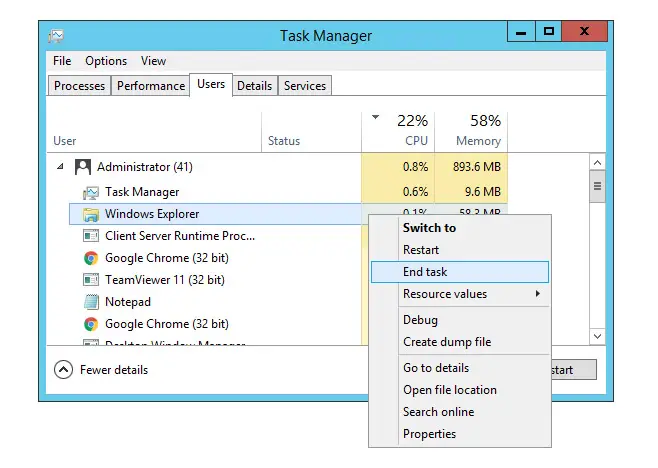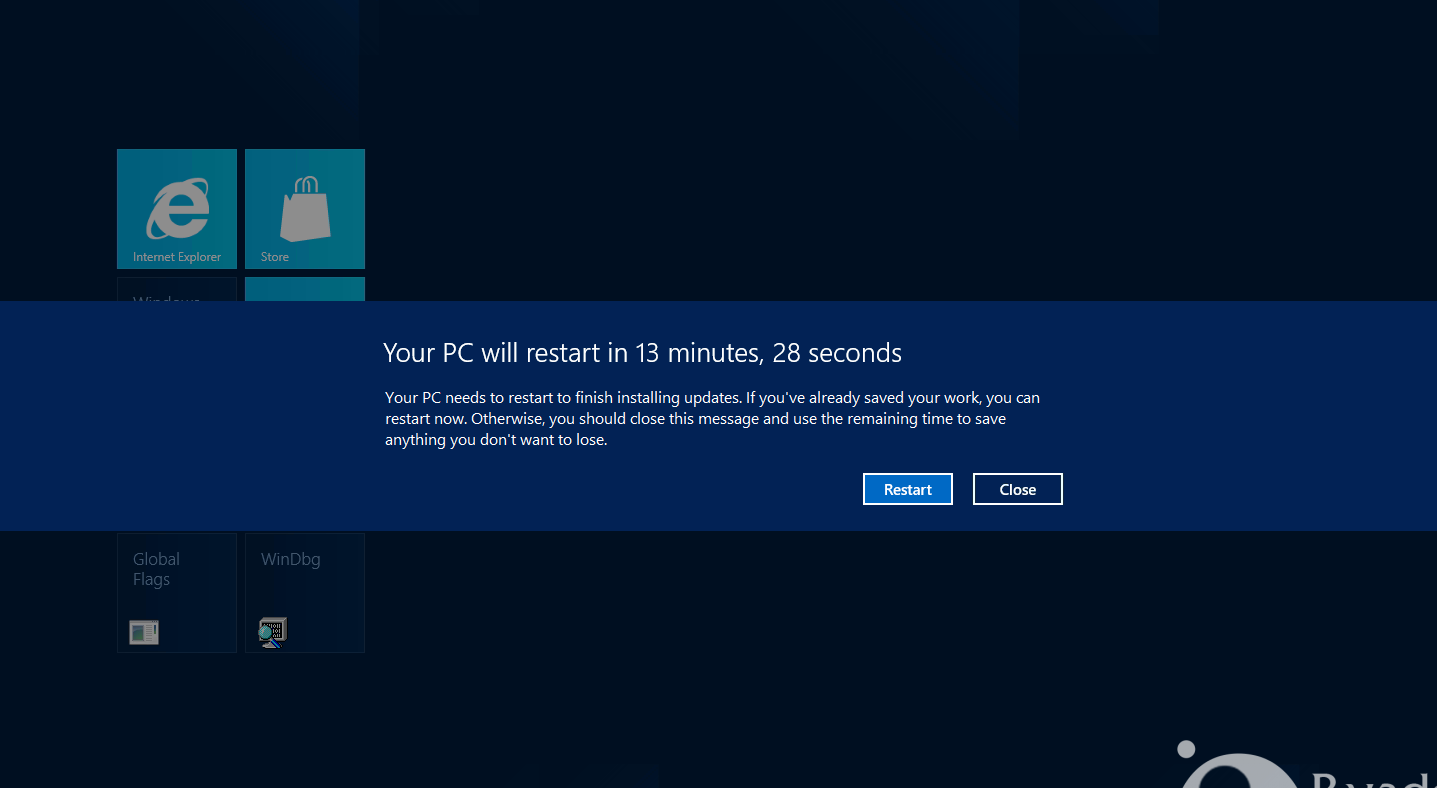Regardless of you being system administrators, software developers or Windows users, you've certainly witnessed Windows Explorer / Explorer.exe crash a number of times. Whenever this happens, most of the time the Windows GUI will have their issues as well - the desktop would freeze, some windows would become unresponsive or "white", icons and/or taskbar would disappear, the mouse will cease working. These glitches will stay for a number of seconds, then they will either disappear - due to an automatic shutdown & recover of the Windows Explorer / Explorer.exe process, assuming Windows acknowledges the fact it got a problem - or stay there until you reboot the system. Which often sucks, since you'll be forced to abandon what you were doing and the wrecked GUI won't always give you the chance to save your stuff.
You've probably noticed that this sad scenario often occurs when we're working with network folders, paths and/or drives which suddendly disappears or become unavailable, maybe because the server goes offline or crashes: these network-based IO operations are more than often what makes Windows Explorer / Explorer.exe crash or go through long, sometimes unrecoverable timeouts. When this happens, you're often left with two choices: wait for Windows to recover the process by itself (see above) or manually killing it with CTRL-ALT-CANC > Task Manager > Processes -> Kill.
The Issue
When Explorer.exe either crashes or gets manually killed, it will most likely bring the desktop and the taskbar down with it. When this happens, we can expect one of the following:
- The system automatically restarts the Windows Explorer / Explorer.exe process, which more than often brings back the desktop and the taskbar in a matter of seconds.
- The system is unable to restart Windows Explorer / Explorer.exe: the desktop and the taskbar keep being dead or unresponsive, leaving us with little chance to continue our desktop session.
Sadly, the latter scenario happens to be the most common one: when this happens we can't do anything much than resetting our PC: a nasty workaround for the aforementioned reasons, expecially on a server machine when a reboot might not be a simple task - or even impossible.
The Fix
Luckily enough, there's a better workaround we can use to bring Windows Explorer / Explorer.exe back to life without rebooting the system. The first thing we have to do is to press CTRL-ALT-DEL to open the Task Manager panel: once there, go to the Users tab, expand the node corresponding to our logged-in account and look for a process called Windows Explorer or Explorer.exe (see screenshot below):
- If you see it, right-click on it and select End Task, otherwise jump to the next step.
- If you don't see it (or if you just killed it) click to the File menu item, then select Run new task, write explorer.exe in the textbox within the popup and hit the OK button.
As soon as you do that, the desktop and the taskbar should both come back to life, giving you again complete control over your GUI without having to reboot.




THis article is bang on – thanks for the tip – but I have a followup question/wail……..why do I have to do this once or twice every day? My WIndows explorer is ALWAYS freezing. I can’t identify any common factor or app (except using more than one app at once(!)); it just goes down then I’m into the BlankStareWait loop before I go CtrlAltDel and restart explorer again via Task Manager.
Successive updates of W10 have not improved this situation. A bare metal reinstall (done for other reasons) left this habit persistent. Have I got hardware issues?
Thank you a lot! If you liked the post, give us a like on FB if you don’t mind:)
Regarding your “twice a day” issue, I would assume that you already performed an Anti-Virus + Anti-Malware check with up-to-date tools, because OS slowness and frequent Explorer crashes are often a symptom of malware or other malicious software (some of them could even survive to a full reinstall).
Other than that, it might be caused by A) a overheating issue, B) a memory issue (RAM or HD swap file) or C) broken or conflicting hardware. Possible things to check: A) check your case fans and/or cooling devices and ensure that they are working properly; B) check your Hard Disk Drive and look for bad sectors or other R/W failures. As for the C) option, I would try to disconnect the other peripherials (USB Drives/pendrives, CD-ROM / DVD / BD and so on) because there could be issues with some USB/EIDE/PCI-E ports, controllers and/or devices. Don’t forget to check your CPanel > Hardware list to see if there are some strange entries there (unknown devices or other strange stuff).
It’s also entirely possible that it’s related to software (bad drivers, corrupted registry file or other OS-related issues), but if I were you I would first check that the HW is 100% good to go before venturing into that. Also, the fact that you performed a bare-metal reinstall and the issue is still there makes me think that the OS is not the culprit here (unless you reinstalled the same wrong drivers).
Let me know about your findings!
AV & AMW is sorted, and the hardware doesn’t overheat (I monitor the CPU temp). HDD check was All Clear. I found courtesy of your ideas list that I’d set the Swap File to maximum allowable – I’ve set it back to Auto Managed for all the HDDs and it seems to be better already – it also fixed a very slow Right Click in Explorer (to open new folder, new shortcut, file handling etc). Will watch and see but already this seems an improvement. Thanks again for the post and the f/up.
Hi there,
any news? Did you succeed in fixing this issue?